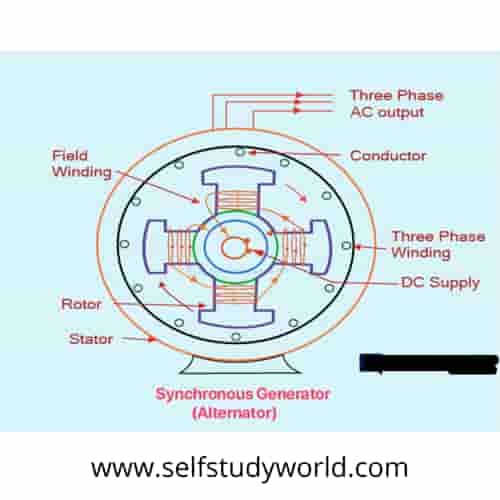Working of 3-Phase Alternator
Hello, friend Today we are discussing the Working of a 3-Phase Alternator. Working on 3-Phase Alternator is an interesting Topic So let's start,
- The rotor winding is stimulated from the dc. exciter and alternate N and S posts are created on the rotor.
- When the rotor is turned the anticlockwise way by a prime mover, the stator or armature conductors are cut by the attractive transition of rotor posts.
- Therefore, e.m.f. is initiated in the armature conductors because of electromagnetic acceptance.
- The actuated e.m.f. is substituting since the N and S rotor posts alternately pass the armature conductors.
- The heading of instigated c.m.f. can be found by Fleming's correct hand guideline and recurrence is given by ;
f=NP/120
where
N = speed of the rotor in r.p.m.
P = number of rotor poles
- Fig. demonstrates star-adjusted armature winding and d.c. field winding.
- At the point when the rotor is turned, a 3-stage voltage is prompted in the armature winding.
- The size of Induced e.m.f. relies on the speed of the pivot and the d.c. energizing current.
- The greatness of e.m.f. in each period of the armature winding is the equivalent.
- Nonetheless, they vary in stage by 120° electrical as appeared in the phasor chart in Fig. 22.4 (ii).
Thank you for reading if you like this post then like this post and do not forget to share this post and visit again on my site for an exciting topic.
Read More
